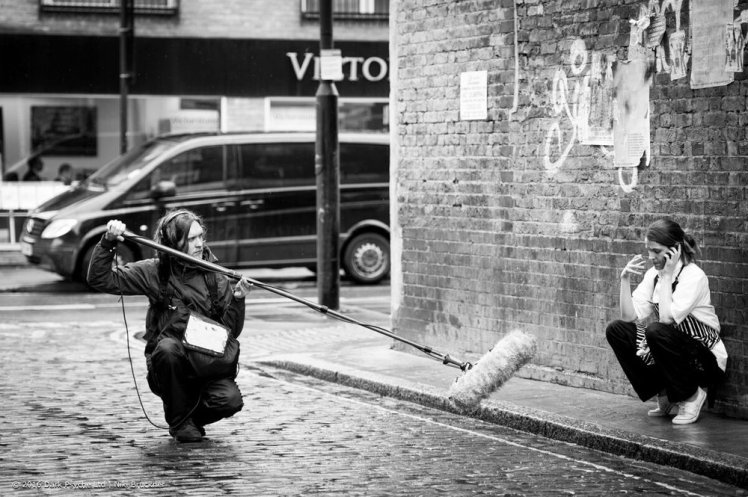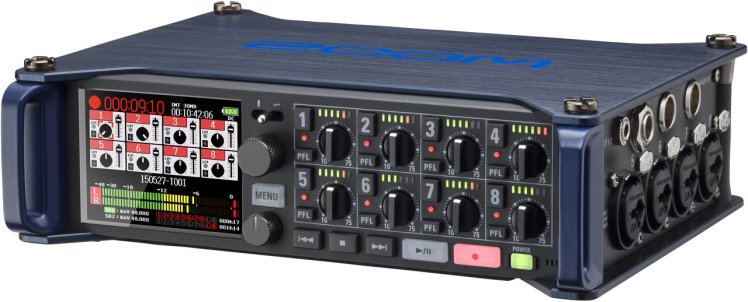A Location Sound Blog

As of this moment, I am knee deep in the pre-production on a short film called Apple. There are only three of us audio guys in charge of separate roles. Chase is in charge of ADR, Zoe is in charge of the Film Score, and I get the daunting task of being head of Foley and Location Sound. As I am fairly inexperienced in the art of Location Sound more than Foley, I have chosen to dedicate my time toward researching the three microphones and equipment that I’ll be using on the film shoot.
 Rode NTG4
Rode NTG4
This semi-professional shotgun microphone will be the primary microphone I’ll use on film I think as my back-up. This mic has a hard polar pattern set to the Shotgun pattern, making it the perfect microphone for location sound. The idea behind shotgun microphones is that they pick up the sound the you point the microphone at, and only that. Alleviating the need to De-Noise all the surrounding noise you’d traditionally pick up when using any other type of microphone or polar pattern. However, as is the traditional characteristic of shotgun microphones, there can be a hiss from the surround as the microphone sometimes has a hard time getting rid of 100% of all background noise floor. However, this model has a good level noise reduction at 16dB-A, the same as a Sennheiser MKE 600 shotgun mic (which is at the professional quality standard), with the added advantage of being more sensitive to incoming audio, making a higher quality recording. This mic has added functionality with a 10dB Pad, High Pass Filter, and a high frequency boost, giving it more versatility, and giving me more options when recording location sound.
Sennheiser 416
This microphone is a higher quality microphone than the Rode NTG4, and it shows. With a good design, good articulation and feedback rejection, making this mic great for all round recording. With a frequency response of 40Hz to 20kHz (20000Hz) making it good for recording dialogue and Foley. With the Low Cut at 100Hz, gradually filtering out any and all of the low-end rumble of an air conditioning unit or something along these lines is perfect as it makes cleaning up the location sound from a film shoot that much easier. It is for this reason that the 416 is the go-to workhorse microphone of the T.V. and film industry. This mic is reliable as it gives a great sound, with a great frequency response.

Zoom F8 Field Recorder and Boom
The Zoom F8 is perfect for recording in the field. With 10 channels, 8 inputs with support up to 96kHz sample rate recording, this device is perfect for recording the location sound. I have found the UI (User Interface) to be quite basic and easy to get my head around, making it decent for on-the-go recordings. This devise is quite portable making it easy move around with. As it is a digital recording interface, there is a reliable clean sound that is pumped through into the Memory unit. The Zoom F8 is a necessity for field recording and I am happy to say I will be using it for every day we shoot. In tandem with the Zoom, I will also be using a Boom pole with is versatile within itself. With a retractable variable length pole, making it easy to use.
DPA 4080 small condenser microphones and Wireless Packs
These small condenser microphones are super helpful as there may be time that dialogue needs to be captured, but the shot is too wide for me to get the boom pole in. The whole point of these mics is to be discrete and unseen but be in close proximity to the mouth so as to get as much of the dialogue a possible. These microphones are so small that they’ll fit in any sized pocket and come with little pop filters so as to alleviate any and all wind as well as some rustling sounds. The frequency response on these mics are okay, but they are best suited for vocals and dialogue. These mics will be used on set in tandem with the greatest asset known to on location dialogue recording, wireless send and receivers. It’s these wireless packs that will make recording dialogue in those shots where using a boom is difficult or impossible. Wireless packs can also be used for boom mic operators (if the shotgun mic has a battery in it), which takes away the necessity for cables to be strewn across the floor.
Wyatt Nicholls
Novice Audio Engineer
Student at SAE
References:
Peter. (08/08/2015). RØDE NTG4+ Review: Semi-pro short shotgun. Accessed at http://microphonegeeks.com/rode-ntg4-plus-review-semi-professional-shotgun/
Peter. (30/06/2015). Sennheiser MKE 600: The Best Short Shotgun Review. Accessed at http://microphonegeeks.com/sennheiser-mke-600-the-best-short-shotgun-review/
Rode. (2018). NTG4. Accessed at http://www.rode.com/microphones/ntg4
Cnet. ( n.d ). Sennheiser MKH-416 Super-Cardioid Short Shotgun Condenser Interference Tube Microphone Specs. Accessed at https://www.cnet.com/products/sennheiser-mkh-416-super-cardioid-short-shotgun-condenser-interference-tube-microphone/specs/
Sennheiser. (2018). MKH 416-P48U3. Accessed at https://en-au.sennheiser.com/mkh-416-p48u3
Sennheiser. (2018). MKH 416 P 48 U. Accessed at https://assets.sennheiser.com/global-downloads/file/5806/MKH_416_Manual_07_2015_EN.pdf
Robjohns, H. (01/12/2013). Zoom F8. Accessed at https://www.soundonsound.com/reviews/zoom-f8
DPA. (2018). d:screet™. 4080 Miniature Cardioid Microphone. Accessed at https://www.dpamicrophones.com/dscreet/4080-miniature-cardioid-microphone
[Image] http://www.joelcarrsound.com/
[Image] https://cvp.com/product/rode_ntg4
[Image] https://m.muziker.ie/zoom-f8-multitrack-field-recorder
[Image] https://www.frontendaudio.com/dpa-4080-cardioid-lavalier-miniature-microphone-w-presence-boost/
[Image] https://www.musicstore.de/en_SE/SEK/Sennheiser-EK300-IEM-G3-Extra-Belt-Pack-Receiver/art-PAH0008404-000

